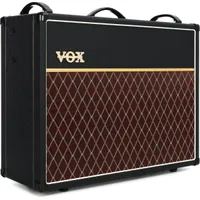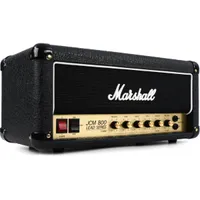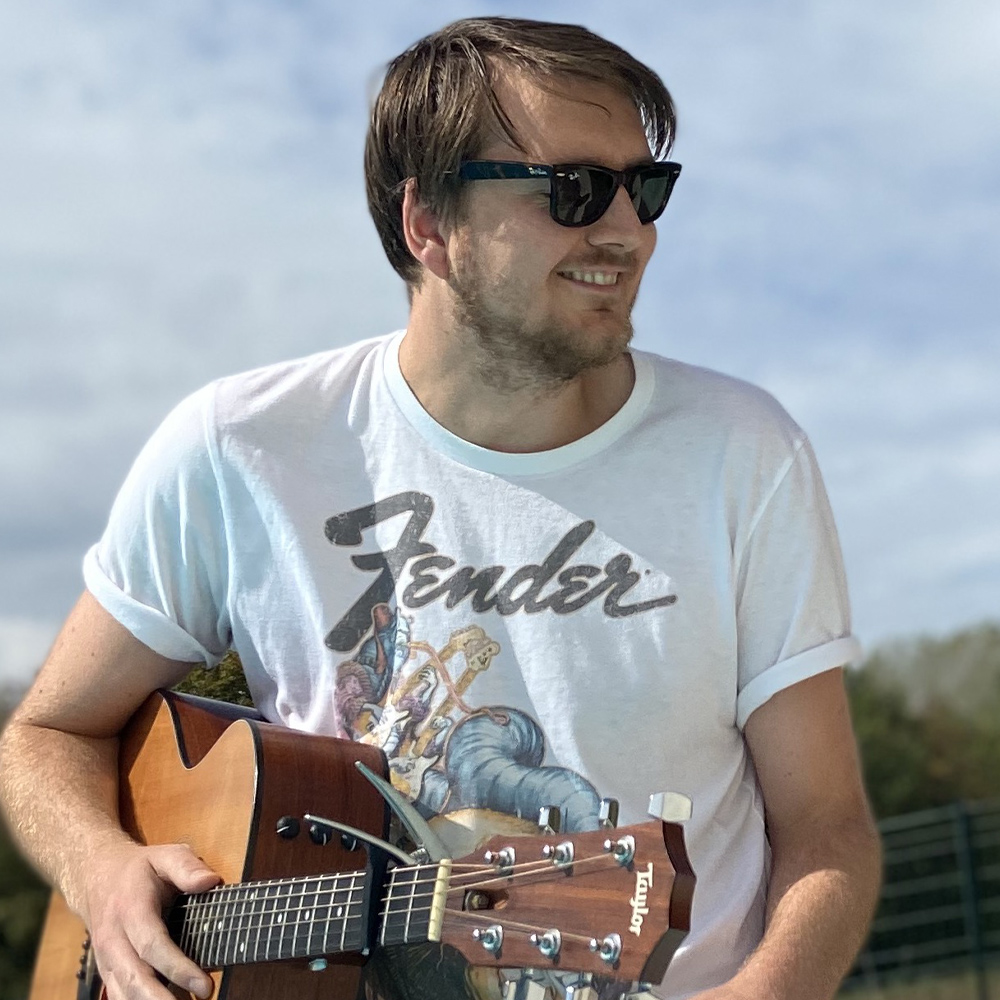Best tube amps 2025: My top tube amps for the ultimate guitar tone
Whether you're a tube traditionalist or chasing a more modern sound, these are the best tube amps from Fender, Marshall, Vox, and more

Digital amps and modelers may have come a long way in recent years, but sometimes you just can’t beat the warmth and response that the best tube amps deliver. From rich, clean sounds to classic on-the-edge-of-breakup and even full-on saturated distortion, tube amps – also known as valve amps – offer a room-filling sound bursting with natural harmonics. Many also deliver a wide frequency range, letting you enjoy the full EQ spectrum in all its glory.
It doesn’t matter if you’re new to the world of tube amps or a seasoned veteran who’s lost count of how many you’ve owned; the dynamics and responsive touch of a good tube amp is something every guitar player should experience, even if it’s just once. This guide is designed to appeal to both camps.
The best tube amps come in many forms – everything from 100-watt heads to low-wattage combos. What’s right for you depends on your playing style, the venues you’re performing in, and of course, your budget.
If you're new to tube amps, check out our extensive FAQs for answers to all your burning questions. To see the best tube amps available today, keep scrolling for our top picks…
Our top picks

If you’re looking to drop some serious cash on the best tube amp, then we’d suggest considering the Fender ’64 Princeton. With luscious and full-bodied clean tones, it’s perfect for running with pedals or just plugged straight in.

Something like the Blackstar HT-1R MKIII might be a little more suited to home use, however. At just 1W, it’s not going to blast the walls down, plus it’s really versatile - able to deliver a fantastic array of gorgeous tube tones.

One of the most popular gigging amps ever made, the Fender Blues Junior IV is a brilliant choice if you're on a tight budget. Delivering plenty of flexibility whilst sitting in that Goldilocks zone of power, size, and weight, it's popular for a reason...
Best overall
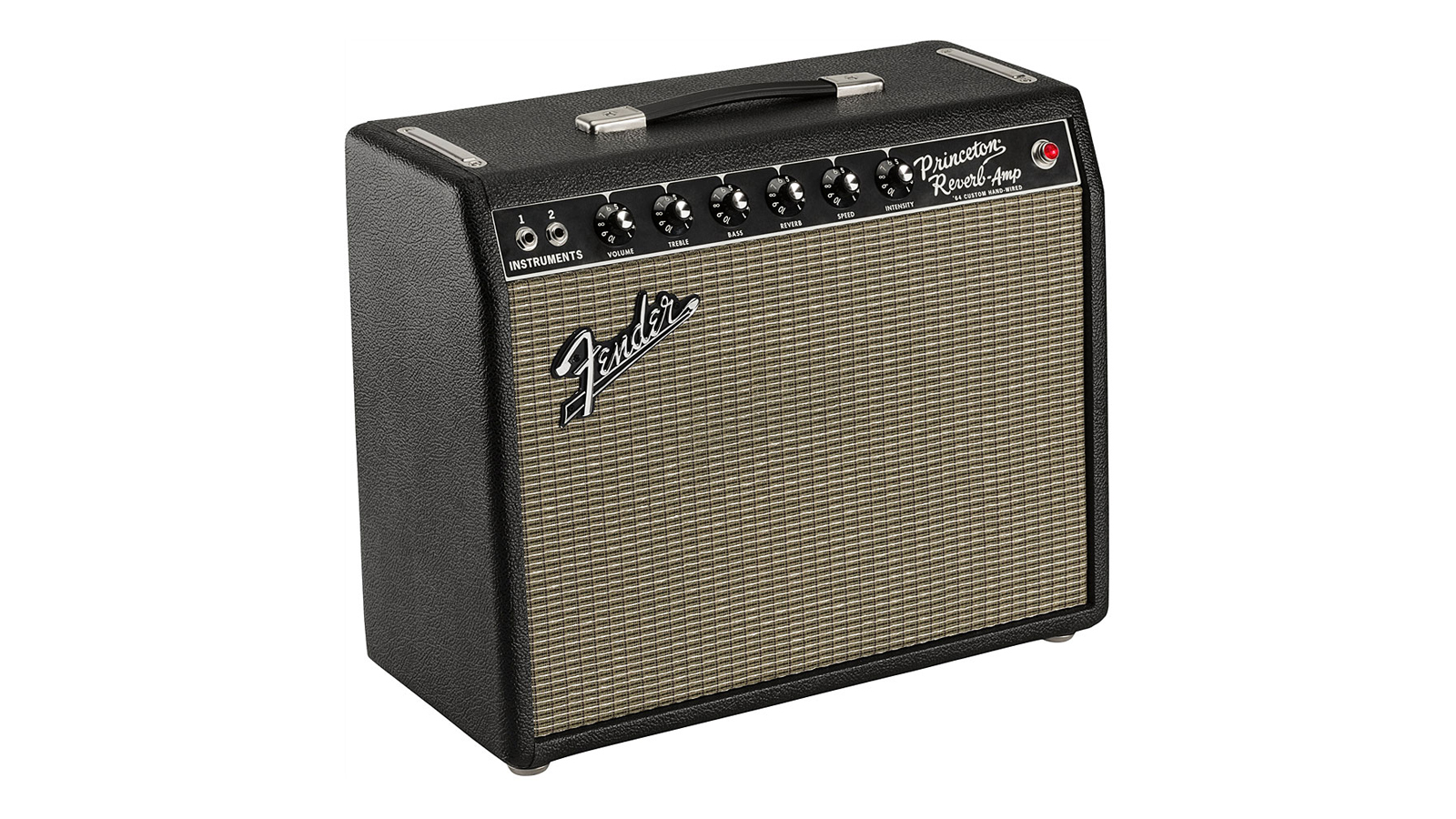
1. Fender ’64 Custom Princeton Reverb
Our expert review:
Specifications
Reasons to buy
Reasons to avoid
The hand-wired ’64 Custom Princeton Reverb delivers all the dynamics and nuances that mid-’60s Princetons were famed for. Incredibly responsive, it offers full-bodied, chimey cleans and, when pushed, classic American drive. It’s warm with a smooth mid-range and clear, sparkling highs, all of which are delivered by a 10” Jensen Vintage Alnico P10R. The tube-driven spring reverb and on-board tremolo are both foot-switchable and add a layer of versatility to an already incredible amp.
Two 6V6 tubes in the power amp section help to deliver an output of 12W, which will be loud enough for small gigs but not so loud that you won’t be able to gain incredible tones at home. There’s a good amount of clean headroom, though when playing live you’ll likely mic it up. Once you crank the volume to around halfway, you’ll start noticing some really sweet and musical breakup; keep going and you’ll get some really nice natural compression, too. The ’64 Custom Princeton Reverb is one of the most usable tube amps out there, and works really well as a pedal platform.
Best for home
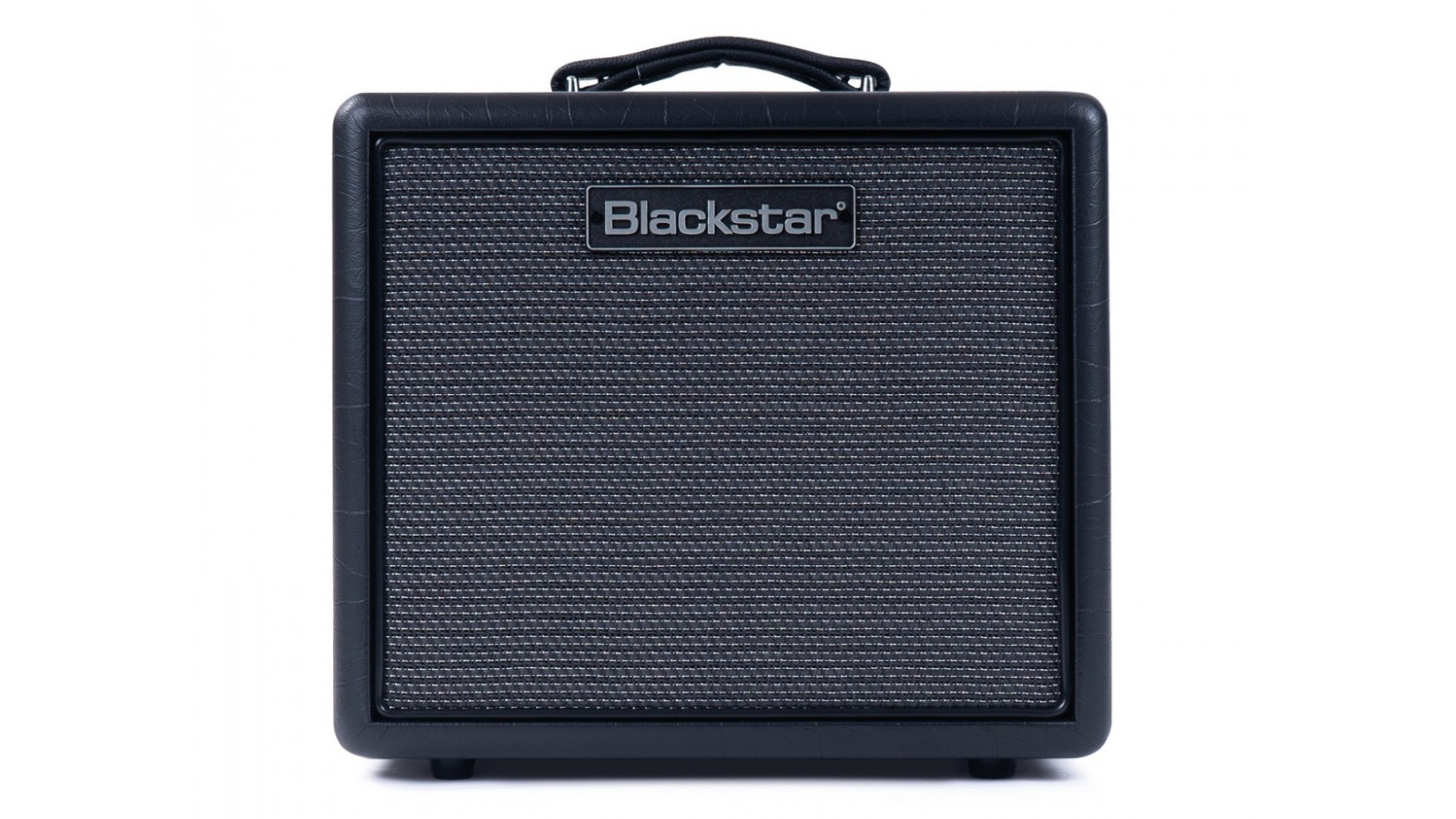
2. Blackstar HT-1R MKIII Combo
Our expert review:
Specifications
Reasons to buy
Reasons to avoid
Blackstar’s small all-tube ‘HT’ series of amps put the company on the map soon after their release. We’re now on the MKIII series of these amps – and they’ve gotten even better.
The HT-1R MKIII has a nice digital reverb on board as well as ‘voice’ switches on both channels offering you a tasteful switch between UK and US tones. The versatility of the HT-1R really has been improved, which can only mean good things for us guitarists.
With the HT-1R MKIII being a small 1 watt, 1x8” combo for under 500 bucks, you’d expect to have to compromise on features – but that’s not the case. This is potentially the best home practice amp for those who want tubes on a budget – and the level of compromise here is, like the amp itself, very small.
The only downside we can see with this amp is that the 8” speaker can sometimes lack the low-end presence we’d like to hear. To be honest though, it’s a small, all-tube practice amp for the price of a couple of overdrive pedals, so realistically there are no complaints here. It’s even got a USB output to enable silent home recording, along with some very clever CabRig speaker emulation incorporated into it.
Best value

3. Fender Blues Junior IV
Our expert review:
Specifications
Reasons to buy
Reasons to avoid
For years now, the Fender Blues Junior series has given guitarists quality tube amp tones at a great price point. With 15W of output at your disposal, you’ll probably get away with performing smaller shows with it, but it’s the perfect amp for playing at home.
It delivers lush and warm cleans with a sparkling top end, as well as some classic-sounding overdriven tones. Stick a boost in front of it to really work the preamp section, or, for heavier tones, run it clean and use your favorite distortion pedal.
Whatever you choose to do with it, the amp’s 12” Jensen C12N speaker boasts the necessary quality to make your guitar work sing.
Best for gigging

4. PRS MT 15 Mark Tremonti
Our expert review:
Specifications
Reasons to buy
Reasons to avoid
PRS, while being mostly well-known for their electric guitars, has produced some impressive amplifiers over the years. Their Archon, Sonzera and J-Mod amps have graced stages all over the world, so it’s no surprise that Mark Tremonti - one of PRS’ longest-standing artists - has entrusted his tone with them in the form of the MT 15.
As you’ve probably guessed, the MT 15 is the 15 watt Mark Tremonti signature amp, and as such, it produces some huge tones despite its small lunchbox-style design. With two channels - one clean, and one overdrive - the MT 15 offers the versatility of amps considerably more expensive than itself, while still remaining simple, fun and easy to operate.
Now, 15 all-tube watts is a lot of power, and in most practice situations it can be a bit too much. Thankfully, PRS has introduced a low power circuit, producing 7W to make your practice sessions that little bit more manageable. This also allows you to drive the tubes to breakup, without driving your landlord to eviction or your neighbors to noise complaints.
Best versatility

5. Orange Rockerverb 50 MKIII
Our expert review:
Specifications
Reasons to buy
Reasons to avoid
Arguably one of the most versatile and powerful pro-level tube amps on the market. The name suggests that it’s going to be a good rock amp – and it really is. Delivering everything from low-gain British crunch all the way to crushing metal-worthy saturation, it retains a fantastic level of touch sensitivity and dynamics.
What might pleasantly surprise you is the chimey, jangly clean channel. Working incredibly well with all types of electric guitars, it gives you the rich, full-bodied tone that good tube amps are known for.
It’s packed full of player-centric features too – you can switch it down to 25W, there’s a foot-switchable attenuator that lets you run the amp at quiet volumes while still getting the most out of the amp, and there’s a tube-driven spring reverb on board.
Best combo

Specifications
Reasons to buy
Reasons to avoid
Don’t let the small size of the Supro Delta King 12 surprise you, this cute little box is packing some serious power and functionality. The successor to Supro’s super popular Blues King, this great little tube combo sounds just as good as it looks.
The clean tone is gorgeous, sounding great with jazz chords and country licks. Drive the volume past halfway and you get that delicious tube breakup, perfect for rock and blues. Two boost modes let you push the amp even harder, taking you right into punk rock and grunge territory.
It’s just about quiet enough for home practice, yet more than loud enough to compete with your drummer at the next rehearsal. A dedicated line out lets you send your signal straight to front of house or use it for recording purposes. Combine that with the stunning-looking cabinet and you’ve got yourself one amazing little tube amp.
Read more: Supro Delta King 12 review
Spec comparison
If you're struggling to decide between our top picks, we've laid out all of the key specifications in one place for you to help you narrow down which is best for you.
Model | Power | Preamp tubes | Power tubes | Channels | Speaker | Weight |
|---|---|---|---|---|---|---|
Fender ’64 Custom Princeton Reverb | 12W | 1x12AT7/3x12AX7 | 2x6V6, 1x5AR4 rectifier | 1 | 1x10” Jensen Vintage Alnico P10R | 32lbs/14.5kg |
Blackstar HT-1R MKIII Combo | 1W | 1x12AX7 | 1x12AU7 | 2 | 1x8" | 12.3lbs/5.6kg |
Fender Blues Junior IV | 15W | 3x12AX7 | 2xEL84 | 1 | 1x12" Jensen C12N | 31lbs/14kg |
PRS MT 15 Mark Tremonti | 15W/7W | 6x12AX7/ECC83 | 2xTAD 6L6GCM-STR | 2 | N/A | 17.8lbs/8.1kg |
Orange Rockerverb 50 MKIII | 50W | 4x12AX7/2x12AT7 | 2xEL34 | 2 | N/A | 20.75kg/45.75lb |
Supro Delta King 12 | 15W | 1x12AX7 | 1x6L6 | 1 | 1x12" Supro DK12 | 28lbs/13kg |
Also consider
For us, the above tube amps should cover most guitarist's needs. Tone is a very personal thing though, so if you didn't find what you were looking for then here are some more great options to look into.
Dixon Hummingbird 15
15W | 2 x 12AX7 | 2 x 6V6 | 1-channel | 1 x 12” Royal Ceramic 50 | 37.3 lbs/17kg
Although it is very stripped-back, the Hummingbird is incredibly dynamic and touch-responsive. There’s plenty of headroom, but it also breaks up beautifully when you dig in or crank the volume. Whether you’re using single-coils or humbuckers, it handles both with ease, and we found it delivered rich, sparkling cleans and a toothy, natural overdrive that rewards expressive playing.
Read more: Dixon Hummingbird 15 review
Victory V30 The Jack MkII
42W | 4 x 12AX7 | 2 x 6L6 | 2-channels | 18.1lbs/8.2kg
Here’s a super versatile head that offers a range of boutique amp-esque tones without the boutique amp price tag. So called because of its ‘jack of all trades’ approach, this 42W head is perfect for players that want to be able to tackle a variety of styles of music with just one amp.
★★★★½
Marshall SV20C
20W/5W | 2 x 12AX7, 1 x 12AX7 phase splitter | 2 x EL34 | 2-channels | 1 x 10” Celestion V-type | 35lbs/15.9kg
The Marshall SV20C is a scaled-down, all-in-one combo version of the manufacturer’s iconic 100W Super Lead Model 1959, reducing the output to a more manageable 20W. This is perfect for gigs and band rehearsals; however, you’ll also have the option to run it at 5W, meaning you can crank it up at home too – it’ll still be loud, but your neighbors are more likely to forgive you!
★★★★½
Vox AC30 C2
30W | 3 x 12AX7 | 4 x EL84 | 2-channels | 2x 12" Celestion G12M | 73lbs/33kg
One of the bastions of the British invasion of the 60s, the Vox AC30 is synonymous with great rock and roll tone from the likes of Brian May and The Beatles. This modern version of a classic amp serves up great tone with loads of functionality, making it one of the best tube amps going.
★★★★½
Marshall SC20H
20W/5W | 3 x 12AX7 | 2 x EL34 | 1-channel | 21lbs/9.4kg
A few years ago, the Marshall JCM800 – one of the most pivotal amps in rock history – was reimagined as part of the Studio series. You can run it clean, add a touch of drive and push the preamp with pedals, or dial up both the master and pre-amp volumes to get all the tubes singing. As with all the models in the Marshall Studio series, the SC20H benefits from a power reduction option that enables you to run it at 5W and get the most out of it at more sensible volumes. Plus it’s got a DI output.
★★★★½
Blackstar St James EL34
50W | 2 x ECC83 | 2 x EL34 | 2-channels | 1 x 12" Celestion G12Z-70 "Zephyr" | 24lbs/10.8kg
We’ve played St James extensively and can personally attest to its incredibly small weight. You can rock up to a gig with this amp in one hand and your guitar in the other, it’s really that unsubstantial. It doesn’t skimp on sound either, with a classic Fender-clean type tone on channel 1 and that signature Vox-like chime on channel 2. It’s a proper tube amp with some clever tech to save you future visits to the chiropractor.
★★★★½
How to choose

The best tube amps can quite often be a significant investment, so it’s worth doing your research to make certain your pick is going to work for you. As with picking any guitar amplifier, the emphasis will be on sound, portability, usability, and connectivity.
1. Sound
You can trust Guitar Player.
If you only ever play clean, then an amp with a great gain channel is probably wasted on you, and vice versa. Do you rely on effects pedals for your overdrive and distorted tones? If so, you'll need to know which amps meet your needs.
You'll then want to figure out the type of amp sound you want, and which type of amp will suit your tone. USA-made amp brands like Fender and Mesa/Boogie will produce a different type of tone than British amps like a Marshall or Vox.
2. Head or combo?
One of the first things to decide upon when choosing the best tube amp is whether to opt for a combo or a head and cab. Combos are all-in-one units featuring the amp and speaker – everything you need to make a sound is in that product.
A head is only the amp part, so you’ll need an external speaker cabinet; whether that’s a single speaker, or something bigger with multiple speakers. Heads are often more compact and portable, but remember you’ll need a cab to run it through – many studios, rehearsal rooms and venues will have these in-house for you to use. Obviously, a combo is an all-in-one solution, but depending on its size, may be less convenient to get from A to B.
3. Are you gigging?
If you're going to be using your tube amp onstage, then you'll want to look for something with a good amount of power. That way, you’ll have no problems being heard.
Tube heads can be good if you play regular shows, as many venues will already have a cab, meaning you can turn up with just your guitar and your head - but the inconsistency of some venues' gear means that sometimes a tube combo can be the preferred option. Having your own amp and speaker in the same box means that your tone has the potential to be more consistent - and this can be a life-saver for us guitarists.
4. Can you use a tube amp for practice?
If you want a tube amp to use solely at home, then it’s best to get something with a lower wattage so that you can drive the tubes while keeping the volume at a steady level. Many modern tube amps now feature power reduction, which will enable you to run them at a higher wattage when you need the volume, then switch them down for home practice.
It's worth thinking about the physical space you want your practice amp to take up. Something like the Fender '64 Custom Princeton Reverb or the Blackstar HT-1R MKII is perfect for those with not much space - and as a rule, the smaller the wattage of a tube amp is the smaller the amp itself will be.
FAQs

How much power does my tube amp need?
The power of an amp is partly determined by its wattage. Picking the right wattage can really help you find the best tube amp for you. If you’re only playing at home, then it’s worth looking for something with a low wattage. This lets you run the amp with its volume knob cranked up more without the actual volume you hear being too loud. Doing so lets you push the tubes more for that organic breakup.
If you want to run an amp clean without it breaking up, then something higher power will likely have more clean headroom, so could work better for you. If you’ve got something super high power and you’re running it at bedroom levels, you might not get the most out of it, so finding that balance is key.
It’s also worth noting that some modern tube amps allow you to select the wattage, so you can run it at a lower setting when playing at home, and then higher when you need the volume.
How do tubes affect the tone of my tube amp?
Of course, the tone of a tube amp is important. If you want a similar sound to some of your favorite players, check out what sort of amps they use. Tube amps can sound quite different depending on the brand; for example, many Marshalls have an aggressive, mid-heavy sound that’s commonly associated with British artists, whereas Fender amps are often more present in the lows and highs, and represent more of an American sound.
How does a tube amp sound?
Tube amps from different sides of the pond tend to have differing tones. Fender amps are highly regarded for their clean tones whereas a Marshall excels at dirty sounds. Although it’s not an absolute rule, amps from America tend to have more treble clarity, whereas British amps sound a lot darker.
If you like to get the majority of your sound from pedals, then finding a tube amp with a great clean tone will be your best bet. If you’re not into pedals, then you’ll almost certainly need something like a gain channel to get those crunchy rhythm and lead tones.
How loud is a tube amp?
Volume is also something to think about. Even a 15-watt tube amp will be seriously loud and although you can get away with that for practicing at home, anything more than that will likely result in noise complaints!
The issue is tube amplifiers need to be turned up to sound their best, so you’ll always be at risk of irritating others when using one at home. Using them at lower volumes means you’re not getting the best of their tonal quality, negating the reason for having one in the first place.
Thankfully many modern tube amplifiers now feature power attenuation so you can harness the power of tube tone without blowing the cat away or completely ruining your already fragile relationship with your neighbors. The best thing is you can turn them right back up at rehearsal or at your next show, and still get the same great tone.
Are tube amps portable?
Tube amps are heavy, there’s no getting around that, unfortunately. Although there is the Blackstar St James amp series which is making strides in the right direction when it comes to weight saving, the majority of tube amps you come across will have some serious heft to them.
Smaller tube amps like the Supro Delta King can be a lot lighter though, so if this might be an issue for you don’t fear, there are still plenty of smaller combos available that will deliver that sought-after tone without the back-breaking weight.
How easy is it to use a tube amp?
Some tube amps have one channel, one tone knob, and an input. Just plug in, dial in a quick tone setting, and away you go. Others will have myriad channels, EQ knobs, and other options for sound sculpting. It’s up to you to decide whether you want an amp that you can just turn on and rock out with or something that will require time to find your desired guitar tone.
This can depend on whether you only play in a particular genre, or for example, you might use pedals to get the majority of your tones so just need a solid base to build upon. It’s a great question to ask before you commit to purchasing as it can save you money on your initial purchase to do away with features you don’t really need.
What connection options does a tube amp have?
Finally, we come to something that many guitar players overlook when purchasing new amps, the amount and type of connections on offer. If you’re running a load of time-based effects on your pedalboard, an FX loop will help declutter your sound by placing them after the preamp and before the power amp. A cab out for expanding your rig might be helpful if you’re looking to beef up your tone by adding some more speakers to your setup.
Many modern tube amps also come with direct outs for recording or sending to front of house. USB outs are featuring more and more too, giving you options to record your sound without having to crank the amplifier and mic it up. Features like these can be a lifesaver when inspiration strikes late at night, so be mindful of what your amp of choice features and ensure you get yourself exactly what you need.
How we test

At Guitar Player, our team of musicians has extensive experience practicing and gigging with tube amps. As we've encountered so many tube amps in the wild, we're well-positioned to compile this list of the very best tube amps available today.
To compile our list of top tube amplifiers, we draw upon our extensive knowledge, meticulous research, and insightful discussions with our editorial team. We carefully evaluate factors such as tonal quality, responsiveness, build quality, versatility, and historical significance, ensuring that our selection showcases the very best of the best.
As enthusiasts of the instrument, we understand the significant outlay of owning a tube amplifier, so we want to make sure you have the perfect one for you. Whether you are a seasoned professional, a dedicated connoisseur, or an aspiring musician, our goal is to provide reliable and well-informed recommendations that assist you in finding the ideal tube amplifier to suit your tonal preferences and artistic expression.
Read more on how we test gear and service at Guitar Player.
Related buyer's guides
- Read more: the best guitar amps for all budgets
- Plug in with one of the best guitar cables
- You'll need one of the best pedalboard power supplies
- On a budget? Here's our list of the best electrics under $1000
- Want an affordable amp? Well, here are the best guitar amps under $1,000
All the latest guitar news, interviews, lessons, reviews, deals and more, direct to your inbox!
After spending a decade in music retail, I’m now a freelance writer for Guitar Player, Guitar World, MusicRadar and Reverb, specializing in electric and acoustic guitars bass, and almost anything else you can make a tune with. When my head’s not buried in the best of modern and vintage gear, I run a small company helping musicians with songwriting, production and performance, and I play bass in an alt-rock band.
- Ross Holder
- Matt McCrackenJunior Deals Writer



